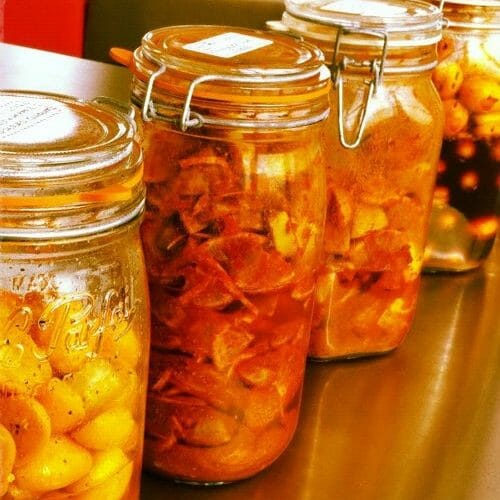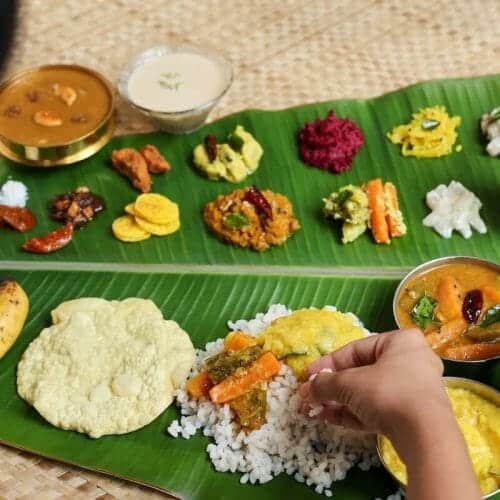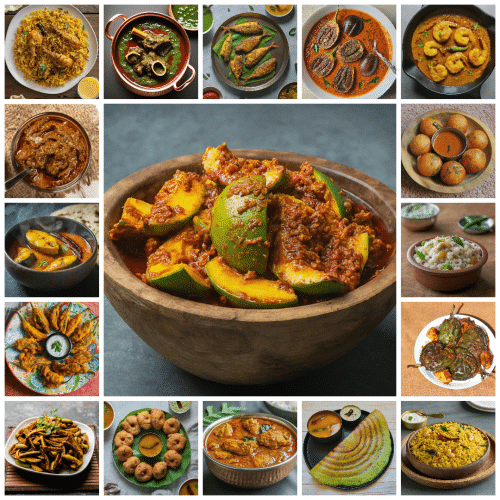China’s culinary landscape is as diverse as its geography and culture. Chinese cuisine offers an expansive palate of regional delights, from the hearty flavours of the north to the subtle sweetness of the east and the fiery heat of central regions. In particular, the eight culinary cuisines of China – Anhui, Cantonese, Fujian, Hunan, Jiangsu, Shandong, Szechuan, and Zhejiang – each offer a unique taste experience that reflects their geographic location, local ingredients, and cultural influences.
This blog will take you on a gastronomic journey across China, delving into the distinctive features of each regional cuisine, standout dishes, and the traditional cooking techniques that make Chinese cuisine one of the most celebrated in the world.
We will explore 10 Chinese dishes, one from each region, to give you a taste of the diverse and delicious offerings of Chinese regional cuisine.
Northern Chinese Cuisine – Hearty, Rich Flavours
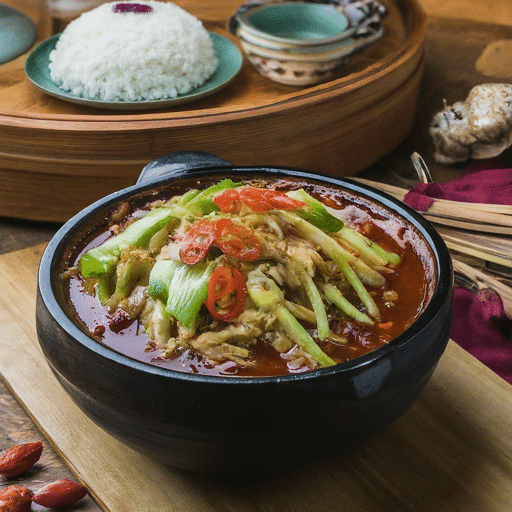
Northern Chinese Cuisine
Northern China, including bustling metropolises like Beijing and coastal regions like Shandong, offers a cuisine characterised by rich and hearty flavours.
With an emphasis on wheat-based staples such as noodles, dumplings, and bread rather than rice, the dishes are often robust and comforting. Ingredients commonly used in northern kitchens include onions, leeks, garlic, and mutton, imparting a distinctive palate that beautifully balances the flavours of land and sea.
Let’s delve into the rich culinary scene of Beijing and Shandong, where you can find delicious dishes such as tanghulu, lamb hotpot, and jianbing, all made with unique ingredients like bean paste.
Savouring Beijing’s Culinary Scene
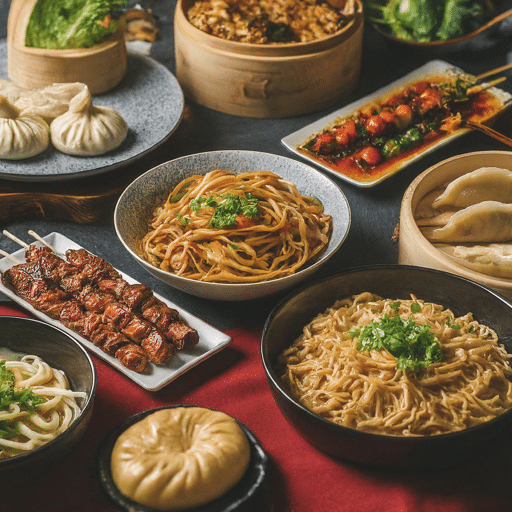
Various Beijing cuisines
The bustling city of Beijing is a melting pot of diverse culinary influences. From street stalls serving sumptuous snacks to restaurants dishing out exquisite imperial cuisine, Beijing offers an exciting gastronomic experience to visitors. Here are some must-try local dishes in Beijing:
- Peking Duck: A renowned Beijing dish, this delicacy is all about the thin, crispy skin of the duck, which is often enjoyed with sweet bean sauce, spring onions, and pancakes.
- Zha Jiang Mian: These wheat noodles, topped with fried soybean paste, diced meat, and vegetables, are a comforting staple in Beijing.
- Mongolian Hotpot: Inspired by neighbouring Mongolia, this dish involves cooking thinly sliced meat and vegetables in a bubbling soup pot at the table.
- Bao du (Tripe): Often enjoyed at lively night markets, this dish features quickly boiled lamb or beef tripe served with a garlicky vinegar sauce.
- Tanghulu (Candied Hawthorn Sticks): A traditional snack, this street-side dessert consists of candied fruits skewered on bamboo sticks. It offers a delightful crunch and a balance of sweet and sour flavours.
Delightful Dishes of Shandong
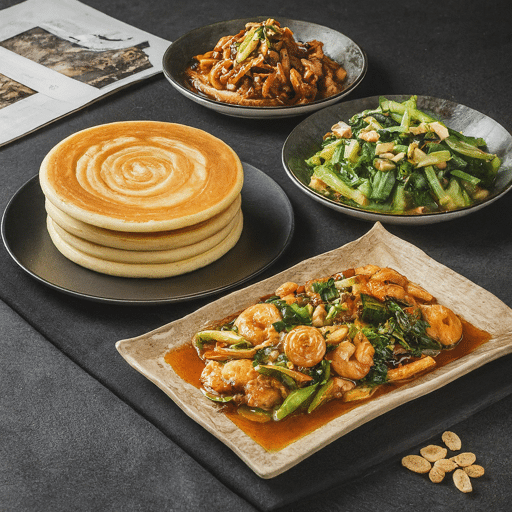
Shanadong cuisines
Shandong, a coastal province of China, plays a significant role in shaping Northern Chinese Cuisine, which has dominant salty flavours and a plethora of seafood dishes. Its cooking, known as Lu Cuisine, is one of China’s most prestigious cooking styles, deeply influencing Beijing’s imperial cuisine.
Shandong cooking, also known as Shandong cuisine, is characterised by crispy dishes. These dishes often feature soft ingredients cooked in clear, pure broths to enhance their original flavours.
Common ingredients include seafood such as fish, shellfish, and prawns, further highlighting its coastline location. Land-based goodies include maize, peanuts, and various vegetables and fruits.
Here are some prominent dishes of Shandong cuisine:
- An essential dish from Shandong is Dezhou Braised Chicken, a traditional dish braised with seasonings over a low flame until the soy sauce-infused meat is tender and flavorful.
- Another special dish is Sweet and Sour Carp, a delicious tangy dish using Yellow River Carp that portrays an exquisite blend of sweet and sour flavours.
Eastern Chinese Cuisine – Seafood and Subtle Sweetness
Venture to China’s East Coast, and you’ll discover mouth-watering cuisines that elegantly utilise the abundant seafood from its seas. The notable regional cuisines of the area are Cantonese, Zhejiang, and Jiangsu, each holding its unique culinary charms. These cuisines share common traits—a soft sweetness underlying their fresh, light fare, clever usage of various cooking methods, and attraction towards quality fresh seafood. Let’s look deeper at the intricacies of these eastern culinary marvels.
The Sophisticated Cantonese Cuisine
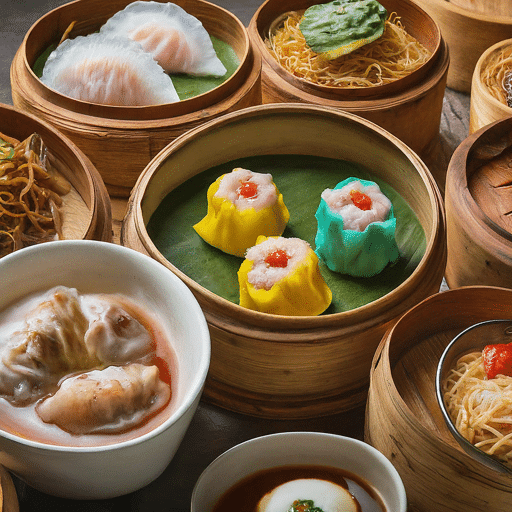
Cantonese Cuisine
Cantonese Cuisine, known as Yue cuisine, originates from Guangdong Province and has made its mark internationally due to its distinctive, mild flavours and the incorporation of various ingredients, from vegetables to exotic seafood and meats. With its origins in the Pearl River Delta region, Cantonese cuisine has spread to the far reaches of the world, including the United States, Canada, Australia, and Southeast Asia. Here are a few Cantonese dishes that showcase the sophistication and diversity of this regional cuisine:
- Char Siu (Roast Pork): This dish flaunts honey-coated pork, slow-roasted until caramelised, resulting in a sweet and savoury balance.
- Dim Sum: Small bite-sized delicacies served in bamboo steamers include an array of dumplings, buns, rolls, and cakes. Dim sum is synonymous with Cantonese gatherings and brunches.
- Ying Yang Fried Rice: A symbolic representation of balance, this dish includes rice and pasta creatively designed with two kinds of sauces—tomato sauce and cream sauce.
- Cantonese Roast Duck: Unlike Peking Duck, this variant is marinated and stuffed with herbs and spices, then roasted to create a flavorful and juicy treat.
- Wok Hei: A cooking method that brings out the ‘breath of the wok’, imparting a unique taste frequently seen in noodle and fried rice dishes.
Zhejiang Cuisine’s Light and Fragrant Dishes
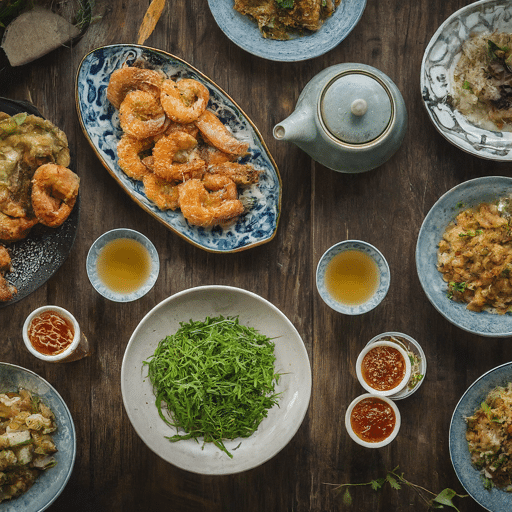
Zhejiang cuisine
Zhejiang cuisine, known as Zhe Cuisine, captures culinary practices from Hangzhou, Ningbo, and Shaoxing. Its dishes are known for their refreshing and light flavours, and they focus on fresh ingredients from the coastal and inland regions, particularly seafood. The chefs intrinsically use cooking wine due to the prestige of winemaking in the Zhejiang province.
Have a look at some of the famous dishes from these cuisines:
- Signature dishes include Dongpo Pork, a popular Hangzhou dish showcasing a slow-cooked pork belly that simply melts in your mouth.
- Another culinary gem is West Lake Fish in Vinegar Gravy, where tender fish from West Lake meets a subtly sweet and tangy sauce, creating a delicious dish many love. Such dishes highlight Zhejiang cuisine’s inclination towards delicate and aromatic fare, with a lingering taste that soothes your palate.
Jiangsu Cuisine’s Graceful Presentation and Taste
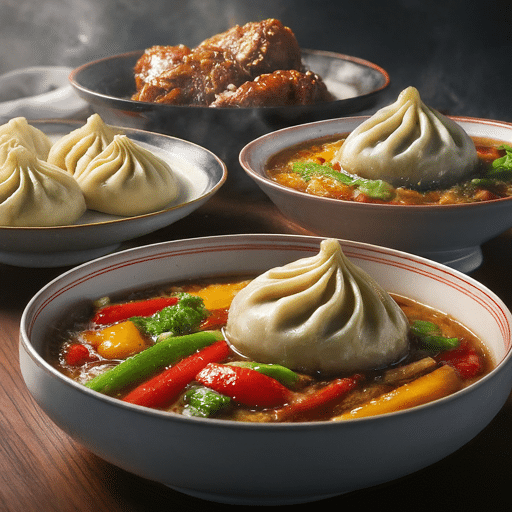
Jiangsu Cuisine
Celebrated for its exquisite presentation and refined flavours, Jiangsu or Su cuisine has deeply influenced the habits and tastes of eastern China. Incorporating fresh seasonal produce and quality seafood as key ingredients, the chefs of Jiangsu pay extra attention to the balance of colour, aroma, and flavour in their dishes to create an enriching gastronomic experience.
Some of the most popular dishes from Jiangsu cuisine are:
- A celebrated dish from this region is Sweet and Sour Mandarin Fish, which showcases a fish carved to resemble a squirrel, deep-fried until crispy, and finally drenched in a tangy-sweet sauce.
- Popular Yangzhou Fried Rice, made with rice wine, attracts worldwide attention. It portrays the marriage of colourful vegetables, juicy shrimp, and stir-fried chicken pieces. The result is a gastronomic beauty that is hard to resist.
Western Chinese Cuisine – Bold Flavors & Enduring Influences
Venturing into Western China will unveil cuisines marked by robust flavours and enduring cultural influences. Xinjiang and Tibetan cuisines stand out for their rich, hearty dishes showcasing bold spices, diverse meat preparations, and a love for dairy.
From succulent mutton kebabs in Xinjiang to steaming bowls of Yak meat stew in Tibet, western China, specifically Central Asia, promises a culinary expedition like no other. Let’s explore the robust offerings of Xinjiang and Tibetan kitchens.
Xinjiang’s Halal Delicacies
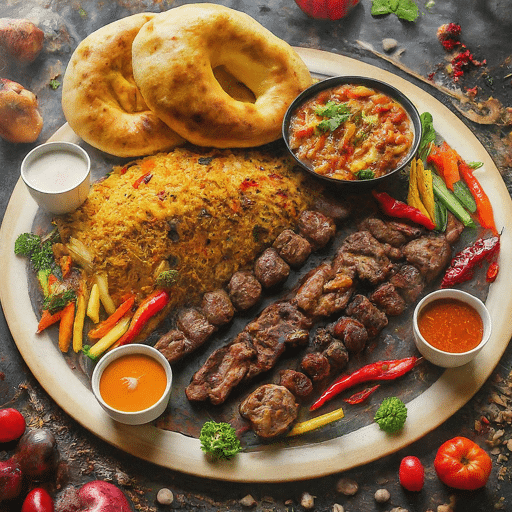
Xinjiang cuisine
Infused with bold flavours and a deep love for lamb and beef, Xinjiang cuisine promises to be a meat-lovers paradise. As home to the Uyghur minority, most inhabitants are Muslims, resulting in a predominance of Halal food. Xinjiang cuisine includes the following must-try dishes:
- Xinjiang Kebabs: Grilled skewers of marinated mutton or beef sprinkled with cumin and chilli powder for that extra kick of flavour are a staple on Xinjiang menus.
- Laghman: Hand-pulled noodles served with stir-fried vegetables and chunks of mutton or beef promise a satisfying meal.
- Xinjiang Pilaf: Also known as “Polu”, this rice dish boasts a savoury combination of mutton, onion, and carrots cooked with rice in a single pot.
- Xinjiang Naan Bread: This crusty bread is perfect for mopping up sauces; you’ll find it on every Uyghur table.
Tibetan Cuisine’s Hearty Comfort Food
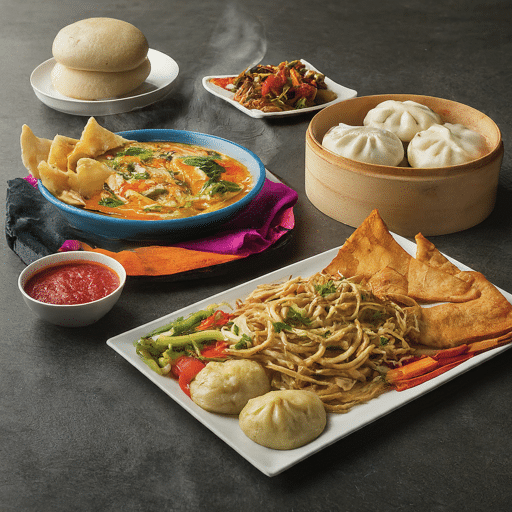
Tibetan Cuisine
The flavours of Tibetan cuisine reflect the harsh, high-altitude climate of the Tibetan plateau. The food here is hearty, comforting and laden with warming ingredients. A key feature of Tibetan food is the heavy use of yak and goat for meat and dairy products. It also leans heavily on barley as a staple grain due to its ability to thrive in colder climates.
Some great picks from Tibetan cuisines are:
- Yak Meat dishes are a speciality, full of flavour and nutrition. These dishes are a warming comfort for the chilling temperatures and are prepared in various forms, from sausages to stews.
- Yak Butter Tea, a salty tea made with yak butter and tea leaves, is another staple that provides nourishment and warmth in cold climates.
- Tibetan Momo, a dumpling filled with meat or vegetables, is another popular choice exhibiting Tibetan food’s heart and comfort.
Central Chinese Cuisine – Spicy and Aromatic
Central China boasts culinary traditions that are nothing short of spectacular. The star players of this region, Hunan and Sichuan cuisines, kindle a love affair with chillies and spices, making them famed for their heat and vibrant flavours. Combined with aromatic seasonings, they create a flavorful feast that is unforgettable. Let’s dive into the aromatic Sichuan and intense Hunan cuisine in the heart of China’s Hunan province.
The Explosive Taste of Sichuan Cuisine
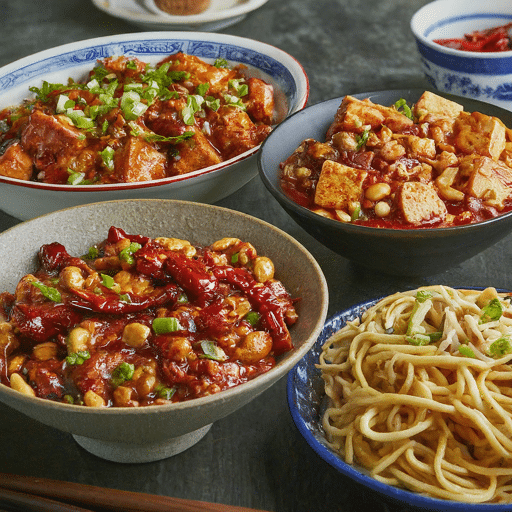
Sichuan Cuisine
The unmissable Sichuan Cuisine (also known as Chuan Cuisine) is renowned for its people’s fondness for “ma” (numbing) and “la” (spicy) flavours. The liberal use of fiery red chillies and mouth-numbing Sichuan peppercorns characterises this bold, pungent cuisine.
Some of the iconic dishes you must savour include:
- Mapo Tofu: Silken tofu cooked in a spicy sauce based on fermented black beans with minced beef or pork. It perfectly represents the numbing and spicy flavours of Sichuan cuisine.
- Kung Pao Chicken: A delectable combination of diced chicken, peanuts, and vegetables, stir-fried with chilli peppers and Szechuan peppercorns.
- Hot Pot: A communal dining experience where fresh ingredients are dipped and cooked in a simmering, spiced broth.
These dishes exemplify Sichuan’s adventurous and bold approach to flavours.
The Intense Heat of Hunan Cuisine
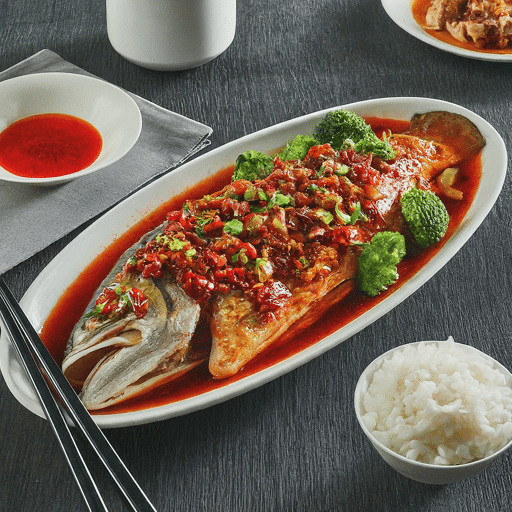
Hunan Cuisine Tofu
Hunan cuisine, also known as Xiang Cuisine, offers dishes that are even spicier than Sichuan’s. In contrast to the numbing spice of Sichuan food, Hunan cuisine is known for its fiery capsicum flavour, which gives it an aromatic heat. Garlic, shallots, and smoked ingredients add depth to its culinary offerings.
Here, the most popular dishes are:
- A celebrated dish is Dong’an Chicken, a traditional Hunan dish with poached chicken cooked in vinegar and chilli-based broth, imparting a tangy and hot flavour that Hunan cuisine is known for.
- Another unique and widespread dish worth trying is Stinky Tofu, a fermented tofu dish that, despite its pungent odour, boasts a crispy exterior and a creamy interior paired with a spicy dipping sauce.
Hunan food is also known for its intense heat, with dishes like large fish heads covered in a heady mix of chopped chilli peppers, garlic, coriander, onion, ginger and fermented soya beans. The liberal use of a dry chilli pepper mix, vinegar, shallots, and garlic gives this cuisine a depth of flavour and heat unmatched in other Chinese cooking styles.
Exploring Southern Minority Foods – Rich in Diversity
The vast landscape of southern China is a colourful tapestry of ethnic groups, each with distinctive food traditions.
The dishes represent both Anhui and Fujian cuisine. They are noted for their diverse use of local farms and mountainous ingredients. These regional cuisines present a plethora of flavours that are a testament to China’s abundant local resources and the age-old cooking traditions of rural communities.
Anhui Cuisine’s Authentic Farm-to-Table Experience
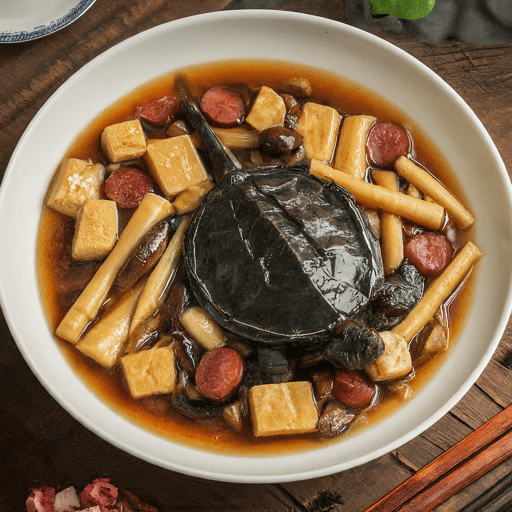
Anhui Cuisine platter
Anhui or Hui Cuisine hails from the inner regions of China and has earned its fame through the skilful use of simple, rustic ingredients, ranging from woodland herbs to bamboo shoots and wild game. This agriculture-driven cuisine focuses on the freshness of ingredients and their nutritional benefits, strongly emphasising incorporating wild plants into their dishes. Here are some popular dishes from this region:
- Stewed Soft Shell Turtle: This delicacy highlights Anhui’s preference for slow-cooked soups and stews, using freshwater turtles from local rivers.
- Bamboo Shoots Cooked with Sausage and Dried Mushrooms: A classic dish showcasing seasonal bamboo shoots combined with smoky sausages and earthy mushrooms.
- Hairy Tofu: Despite its unappetising name, it’s a well-loved local delicacy. It is made by fermenting tofu until it develops a hairy mould layer. The tofu is then deep-fried until crispy and served with a spicy sauce.
Fujian Cuisine Is Unique Appeal
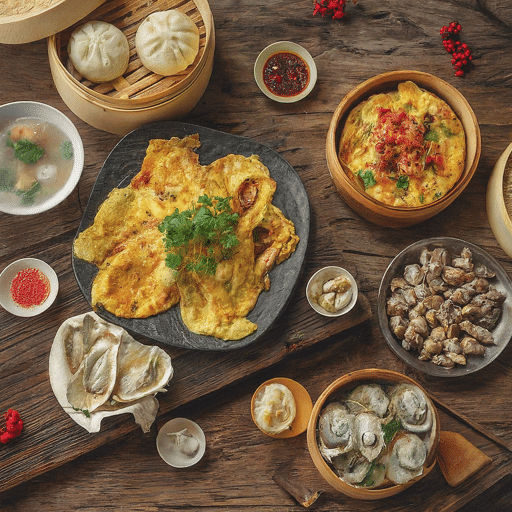
Fujian Cuisine
Fujian, often known as Min Cuisine, presents a harmonious blend of sea and mountain fare. What distinguishes Fujian cuisine is the meticulous selection of ingredients, including seafood, the diverse soups and broths, and the intricate cutting techniques.
Due to its coastal location, Fujian cuisine prominently features seafood paired with unique regional produce like woodland mushrooms and bamboo shoots, unveiling light yet satisfyingly umami-laden flavours.
One famous dish, Buddha Jumps Over the Wall, is an elaborate multi-ingredient dish symbolising Fujian cuisine’s delightful flavours and wide-ranging ingredients.
It combines a wide variety of premium ingredients, such as sea cucumber, abalone, shark fin, scallops, and quail eggs, slowly stewed to perfection to create a rich, flavorful feast.
Also Read: Thai Chicken and Rice Soup
Conclusion
Exploring China through its culinary traditions is a voyage of discovery filled with unexpected delights. This nation’s diversity is expressed beautifully through its regional cuisines, each carrying the legacy of a unique culture, geography, and history. From the rich and hearty dishes of Northern China to the delicate sweetness of the Eastern Sea, the intense heat of Central provinces, and the diversity of Southern minorities, a tapestry of flavours awaits to savour.
These regional cuisines, with their distinctive flavours, techniques, and ingredients, represent the broad spectrum of Chinese cooking culture. They present a fascinating narrative of a country filled with diversity and versatility in its gastronomic offerings. So, whether one finds pleasure in Hunan’s fiery spices, relishes Beijing’s hearty dumplings, or seeks comfort in Cantonese dim sum, their love for food will find a home in China’s diverse regional cuisines.
Frequently Asked Questions
What factors contribute to the diversity of Chinese regional cuisines?
Geography, climate, local resources, cultural influences, and historical development shape the diversity of Chinese regional cuisines. Regional diets adapt to local agricultural products, breeding conditions, lifestyle habits, and even climatic variations, leading to distinctive regional flavours and cooking techniques.
How can I discover these regional flavours while travelling in China?
Sampling local food while visiting different regions, participating in culinary tours, dining in local restaurants, and attending cooking classes can help you explore China’s regional cuisines. Each region offers unique food markets, food festivals, and restaurants showcasing their local culinary repertoire.
Are there any lesser-known regional Chinese cuisines worth trying?
Apart from the eight main types, lesser-known Chinese regional cuisines like Mongolian, Yunnan, Xinjiang, and Tibetan offer unique flavours. These cuisines feature dishes featuring unique local ingredients, like yak in Tibetan cuisine or pungent fermented vegetables in Yunnan cuisine, which are worth exploring.
How do culinary traditions vary across China’s provinces?
Culinary traditions vary based on local agriculture, staple grains, available resources, ethnicity, and historical influences, leading to unique regional cuisines. For instance, northern provinces favour wheat-based dishes, while the southern regions tend to use rice. Spiciness varies, with central provinces known for their heat.
Can I find regional Chinese cuisine in cities outside of China?
Yes, Chinese regional cuisines have gained popularity worldwide, and you can find them in major cities across the globe. Speciality restaurants serving Cantonese, Sichuan, or Hunan dishes are commonplace in metropolitan areas, offering international food lovers a taste of China’s diverse culinary culture.







